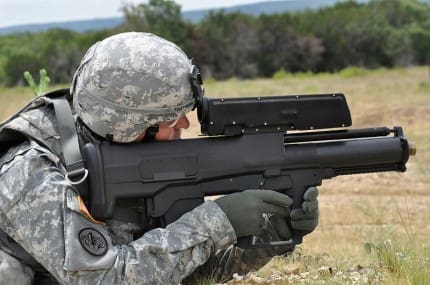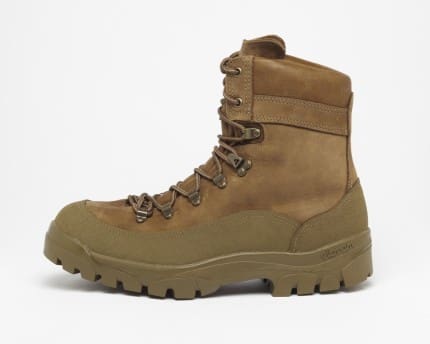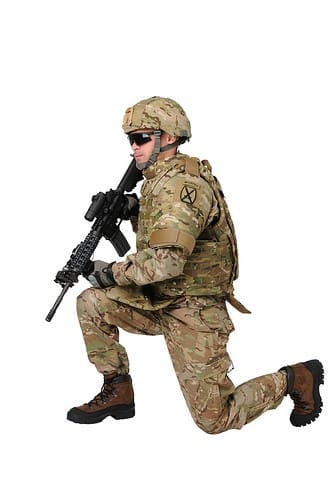According to information released by COL Douglas Tamilio, PM Soldier Weapons, the XM25 deployment we wrote about last fall has been going very well. Despite the fact that the Army was only able to deploy five developmental systems to theater, the XM25 has been referred to as a “game changer”. In fact, BG Peter Fuller revealed to a group of journalists attending PEO Soldier’s media round table that while the Army still hadn’t come up with a name for the XM25, Soldiers certainly had. Dubbed the “Punisher” by troops, the XM25 is said to end engagements with enemy combatants in a matter of minutes. Soldiers fire the 25mm airburst munitions on enemy emplacements and return fire disappears.

The XM25 utilizes specialized 25mm airburst munitions that receive range to target information from the weapons sighting system. The weapon programs the grenade prior to launch and it detonates once it reaches the target. This allows the shooter to detonate the grenade above dug in adversaries or behind other forms of cover.
The only problem so far with the weapon is that there aren’t enough of them to go around. The Army is currently seeking funds for an additional 36 weapons but even once funding is secured, it will be at least a year before they are ready. As the program is still in Milestone B meaning it remains in development, no weapons or ammunition has been produced by the contractor in three years and there are no spares. Given a go ahead to produce more of both would require subcontractors to begin the work of hand building additional weapons and ammunition. At this point, production as we commonly perceive it does not yet exist for the XM25. Ammunition currently costs about $1000 per round for the hand crafted versions but COL Tamilio expects production versions to go for $35. If the program remains on its current schedule, the XM25 should reach Milestone C which is a production decision in FY2013.
When asked about future enhancements to the system, COL Tamilio responded that Soldiers are asking for increased range beyond the 500M for point and 700m for area targets to around 1000m. He felt that this was fully achievable but that everything is a balancing act and in order to increase range the warhead would have to be reworked. Additionally, such changes meant that new certifications would have to be completed which can take more than six months to accomplish. As far as weight is concerned, most Soldiers who have employed the weapon were not concerned with the current 12.5 lbs due to its effectiveness. And, most of these troops were carrying additional weapons for self protection. Finally, there is interest in developing a longer lasting battery since the current rechargeable is difficult to support in the field.
COL Tamilio also revealed that the idea to deploy the weapon to Afghanistan actually originated in his office and that a rudimentary plan had already been formulated before the Operational Needs Statement was received from OEF forces. This allowed them to rapidly support the ONS which was received 8 October, 2010 with a fielding 30 days later.
The systems were accompanied initially by training personnel but as they were used in combat by various small units in differing terrain they were always accompanied by a senior NCO from the Maneuver Center of Excellence as well as a Major from PM Soldier Weapons. During this period, 100s of rounds were expended in contact with the enemy. The Army Test and Evaluation Command is current writing a report on the XM25’s deployment which was formally referred to as a Forward Area Operational Assessment.
Based on information in the FOAA report, the Army will have a better idea of how the program should proceed. Additionally, the information may be used to validate operational employment concepts for the system. In the meantime, one thing remains certain. The Army has no plans to replace the newly fielded M320 40mm grenade launcher with the XM25. It will be purely a supplemental capability.
Bottom line to the new Congress…Free up some cash for the XM25 so we can keep this thing on track.



















































































































